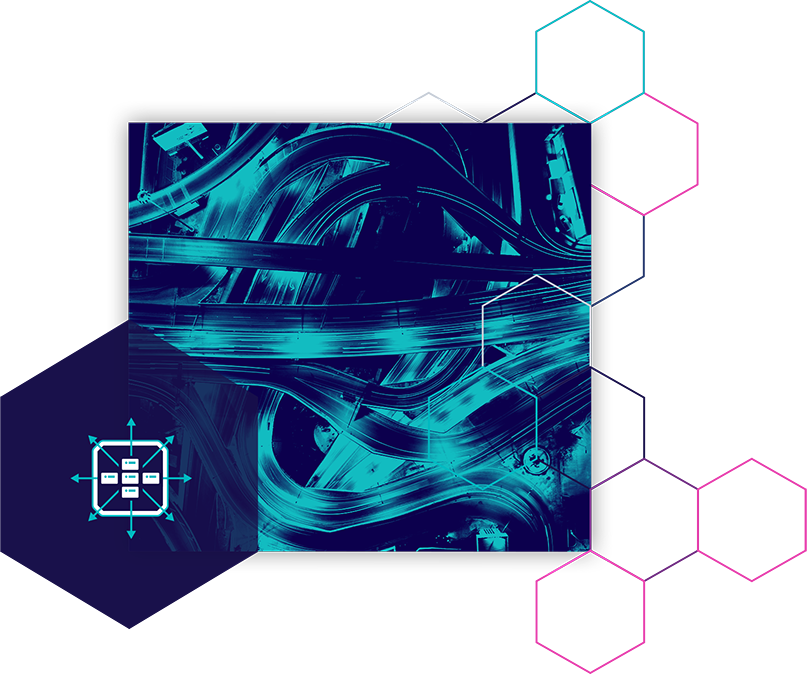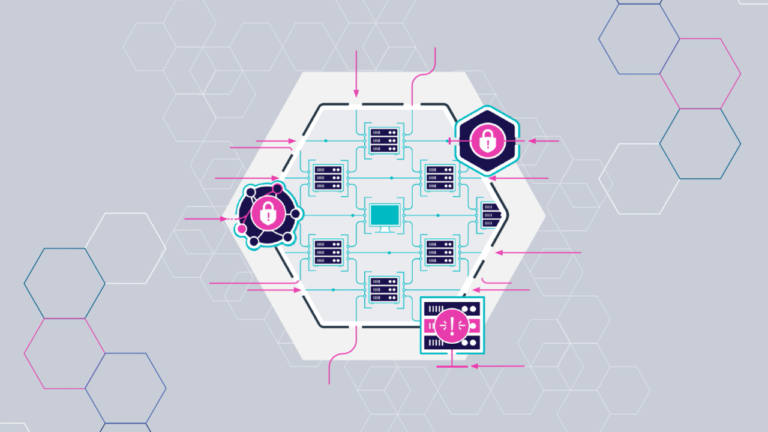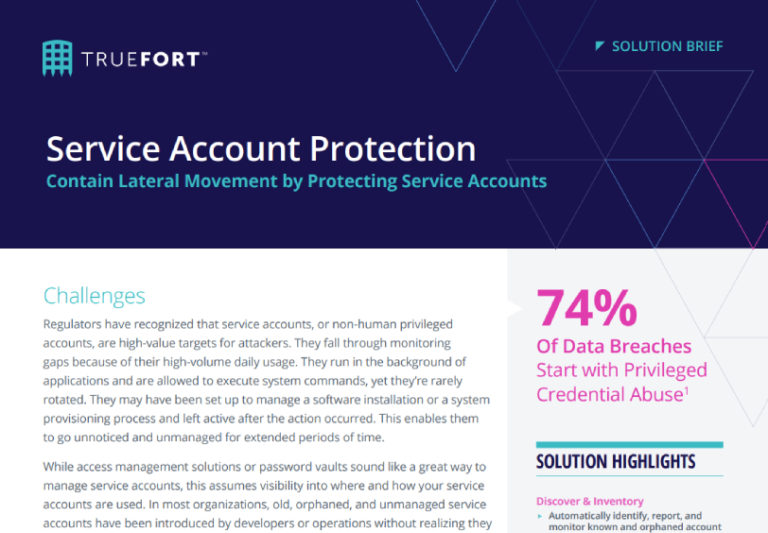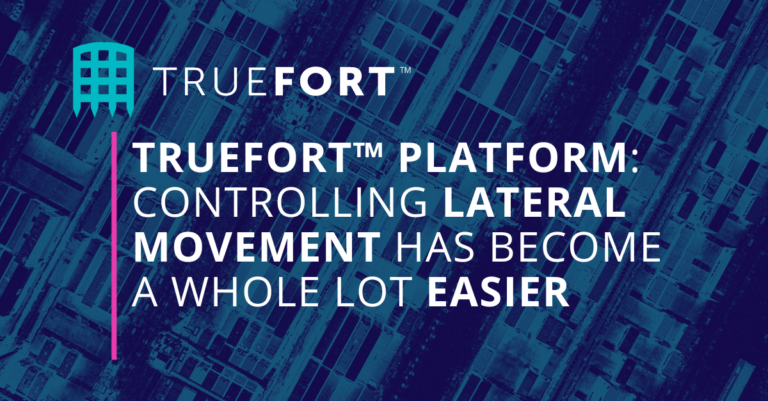TRUEFORT SOLUTION
Lateral Movement Solution for Preventing Cyber Attacks
Security is most lacking in production applications, where attacks can be the most devastating. Existing tools do not understand applications, their interactions, and service account behavior. TrueFort protects against lateral movement by enforcing microsegmentation via host firewalls, shutting down compromised credentials, and blocking unusual command line arguments at execution time.
Production applications are a security visibility gap
- Understanding attack surface – outside threats and compromised insiders cannot be detected or stopped from moving laterally by existing network security solutions.
- Discovering applications and resources – most organizations don’t know how servers and other workloads are used across their data center and cloud environments.
- Identifying excessive entitlements –user and machine entitlements contain increased privileges and are rarely adjusted or revoked, increasing privileged access and movement across the infrastructure when compromised.
- Ensuring optimal operations – eliminating high-risk activity across workloads is a challenge without sacrificing application performance.

Shared understanding of normal production application behavior
Granular control of trust
Discover, understand, and enforce applications and workload behaviors to create a continuously trusted environment.
Deep behavioral understanding
Use machine learning to automatically map the behavior of applications, workloads, and users to create a baseline and control application changes and block unrecognized behaviors.
Shared source of truth
Identify all workload activity across the data center and cloud, including which service accounts are executing within each application, to translate application relationships and data flows between security and operations, - including the process, identity, and network parameters
Continuous enforcement
easily set preventive policies that block unnecessary network connections between applications, disable rogue accounts, limit privileged access, and kill anomalous processes as they execute
FAQ
In the context of cybersecurity, lateral movement refers to the progression or lateral spread of an attacker’s presence within a compromised network. Once an attacker gains initial access to a system, they attempt to navigate through the network, moving horizontally from one system or resource to another, seeking valuable assets, or expanding their control.
Lateral movement techniques include leveraging stolen credentials, exploiting vulnerabilities, and using malware to propagate across systems. Attackers aim to escalate privileges, access sensitive data, or gain control over critical infrastructure. Detecting and preventing lateral movement is crucial, as it helps contain the impact of an intrusion, minimizes data exfiltration, and limits the attacker’s ability to move deeper into the network.
Detecting lateral movement cyber security requires a combination of proactive monitoring and advanced security measures. Here are some key techniques to detect and mitigate lateral movement:
- Network Segmentation: Implementing network segmentation limits lateral movement by dividing the network into isolated segments, reducing the attacker’s ability to navigate freely.
- Intrusion Detection and Prevention Systems (IDPS): Deploying IDPS solutions helps monitor network traffic, detect suspicious activities, and alert administrators of potential lateral movement attempts.
- User and Entity Behavior Analytics (UEBA): Utilizing UEBA tools helps establish baseline behavior patterns and identify anomalies that could indicate unauthorized lateral movement.
- Endpoint Detection and Response (EDR): Employing EDR solutions provides real-time visibility into endpoints, enabling the detection of suspicious activities and lateral movement attempts.
- Log Analysis and Correlation: Analyzing system and network logs can reveal patterns or indicators of lateral movement, allowing for timely response and containment.
- Threat Intelligence and Indicators of Compromise (IoCs): Staying updated with threat intelligence feeds and IoCs helps identify known attack techniques associated with lateral movement.
By combining these strategies, organizations can enhance their ability to detect and respond to lateral movement, minimizing the potential impact of an intrusion and swiftly containing the attacker’s progress within the network.
Preventing lateral movement requires a multi-layered approach aimed at reducing an attacker’s ability to traverse the network. Here are key strategies for organizations to mitigate lateral movement:
- Network Segmentation: Implementing strict network segmentation isolates critical assets, limiting lateral movement opportunities and minimizing the impact of a breach.
- Least Privilege Access: Enforcing the principle of least privilege ensures that users and systems have only the necessary permissions, preventing unauthorized lateral movement.
- Strong Authentication: Implementing multifactor authentication (MFA) adds an extra layer of security, preventing attackers from moving laterally using stolen credentials.
- Patch Management: Regularly applying security patches and updates close vulnerabilities that attackers could exploit for lateral movement.
- Intrusion Detection and Prevention Systems (IDPS): Deploying IDPS helps detect and block lateral movement attempts by monitoring network traffic and identifying malicious activities.
- Endpoint Protection: Employing robust endpoint protection solutions, including next-generation antivirus and host-based firewalls, mitigates the risk of lateral movement through compromised endpoints.
Through the implementation of these preventive measures and maintaining a strong security posture, organizations can significantly reduce the likelihood and impact of lateral movement, enhancing their overall cybersecurity defenses.
Resources













